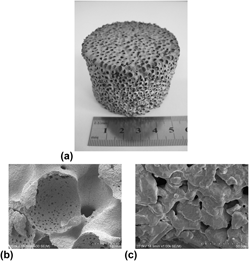Crossref Citations
This article has been cited by the following publications. This list is generated based on data provided by
Crossref.
Pałka, Krzysztof
Adamek, Grzegorz
and
Jakubowicz, Jarosław
2016.
Compression Behavior of Ti Foams with Spherical and Polyhedral Pores .
Advanced Engineering Materials,
Vol. 18,
Issue. 8,
p.
1511.
Hardada, Yasunroi
and
Hattori, Shuji
2017.
Deep drawability of Ti/resin/Ti laminated sheet.
Vol. 1892,
Issue. ,
p.
080005.
Cohn, Joshua A.
Kowalik, Casey G.
Kaufman, Melissa R.
Reynolds, W. Stuart
Milam, Douglas F.
and
Dmochowski, Roger R.
2017.
Evaluation of the axonics modulation technologies sacral neuromodulation system for the treatment of urinary and fecal dysfunction.
Expert Review of Medical Devices,
Vol. 14,
Issue. 1,
p.
3.
Yao, Yuanyuan
Jin, Shaohua
Zou, Haoming
Li, Lijie
Ma, Xianlong
Lv, Gang
Gao, Feng
Lv, Xijuan
and
Shu, Qinghai
2021.
Polymer-based lightweight materials for electromagnetic interference shielding: a review.
Journal of Materials Science,
Vol. 56,
Issue. 11,
p.
6549.
Zhao, Biao
Hamidinejad, Mahdi
Wang, Shuai
Bai, Pengwei
Che, Renchao
Zhang, Rui
and
Park, Chul B.
2021.
Advances in electromagnetic shielding properties of composite foams.
Journal of Materials Chemistry A,
Vol. 9,
Issue. 14,
p.
8896.
Yang, Guang
Guo, Chongchong
Zhang, Yongdi
Yang, Zongjie
and
Chen, Lei
2021.
Design Method of Porous Titanium Alloy Based on Meta-Structure.
Integrated Ferroelectrics,
Vol. 215,
Issue. 1,
p.
149.
Pandey, Ashutosh
Kumar, Rajeev
Mondal, Dehi Pada
Kumar, Pradip
and
Singh, Shiv
2022.
Nickel Oxide Sprinkled In-Situ Grown Hierarchal Graphitic Jungle Anchored Feathery Aluminium Foam: A Novel Material for Remarkable Electromagnetic Waves Absorption.
SSRN Electronic Journal,
Fang, Yu
Li, Xiaolong
Sheng, Mengjie
Gong, Shang
Wu, Hao
Lu, Xiang
and
Qu, Jinping
2022.
Nickel foam encapsulated phase change composites with outstanding electromagnetic interference shielding and thermal management capability.
Composites Part A: Applied Science and Manufacturing,
Vol. 160,
Issue. ,
p.
107056.
Pandey, Ashutosh
Kumar, Rajeev
Mondal, Dehi Pada
Kumar, Pradip
and
Singh, Shiv
2023.
Nickel oxide-sprinkled in-situ grown hierarchal graphitic jungle anchored feathery aluminum foam: A novel material for remarkable electromagnetic waves absorption.
Materials Today Nano,
Vol. 21,
Issue. ,
p.
100301.
Zhao, Yuzhen
Li, Chaonian
Lang, Tingting
Gao, Jianjing
Zhang, Huimin
Zhao, Yang
Guo, Zhun
and
Miao, Zongcheng
2023.
Research Progress on Intrinsically Conductive Polymers and Conductive Polymer-Based Composites for Electromagnetic Shielding.
Molecules,
Vol. 28,
Issue. 22,
p.
7647.
Hu, Yougen
Lin, Zhiqiang
Xu, Yadong
and
Sun, Rong
2024.
Porous Nanocomposites for Electromagnetic Interference Shielding.
p.
315.
